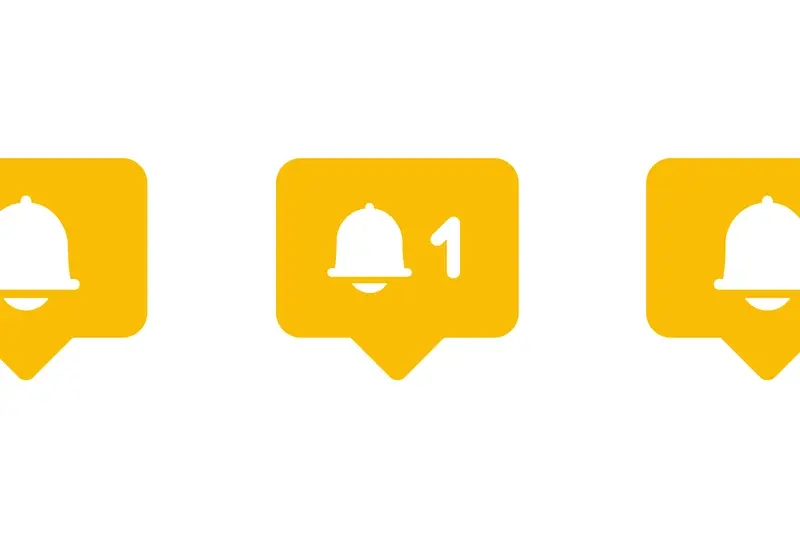What Makes Users Delete Apps?
One of the most frustrating things with building an app is seeing a beautifully crafted app get deleted within days of being downloaded. You spend months—sometimes years—building something you believe will change people's lives, only to watch users uninstall it faster than you can say "push notification". It's heartbreaking, but it's also incredibly common.
The truth is, understanding app uninstall reasons isn't just about numbers and analytics; it's about getting inside the minds of real people using real phones in real situations. User behavior with apps can seem unpredictable at first glance, but there are actually clear patterns once you know what to look for. The psychology behind app deletion is fascinating—and once you understand it, you can design apps that stick around.
Users don't delete apps on a whim; they delete them because those apps have failed to earn their place on the home screen
Throughout this guide, we'll explore the main reasons people hit that uninstall button. From performance problems to privacy concerns, from poor design to simple lack of value—we'll cover it all. By the end, you'll have a clear picture of mobile app psychology and what drives users to keep or delete your creation.
The Psychology Behind App Deletion
I've watched thousands of users interact with apps over the years, and there's something quite fascinating about what happens in those few seconds before someone decides to delete an app. It's not usually a rational decision—it's emotional. People don't sit down with a spreadsheet weighing up the pros and cons; they feel frustrated, annoyed, or simply fed up.
The human brain is wired to make quick judgements about things that aren't working for us. When an app crashes for the third time, or when someone can't find what they're looking for within the first minute, their brain starts sending signals that this thing is wasting their time. And time, let's face it, is the one thing we all feel short of these days.
The Emotional Triggers
From my experience, there are three main emotional states that lead to app deletion:
- Frustration—when the app doesn't work as expected
- Confusion—when users can't figure out how to use it
- Indifference—when the app becomes irrelevant to their life
What's interesting is that once someone reaches that emotional tipping point, they rarely give the app a second chance. The delete button becomes a way to regain control and clear mental clutter. Smart app developers understand this psychology and design their apps to avoid triggering these negative emotions in the first place.
Performance Problems That Push Users Away
Nothing kills an app faster than poor performance—and I mean nothing. After building dozens of apps over the years, I can tell you that users are ruthless when it comes to apps that don't work properly. They'll give you maybe three seconds before they start getting frustrated, and about ten seconds before they're reaching for that delete button.
The biggest performance killers are crashes, slow loading times, and apps that freeze up. When someone taps your app icon, they expect it to open quickly and work smoothly. If your app takes ages to load or keeps crashing, you're basically telling users that their time doesn't matter to you.
Test your app on older devices with slower processors and limited RAM. If it works well on a three-year-old phone, it'll fly on newer devices.
The Main Performance Problems
- App crashes and unexpected shutdowns
- Slow loading screens that take more than 3 seconds
- Laggy scrolling and unresponsive touch controls
- Features that don't work as advertised
- Poor offline functionality
Users expect apps to work like magic—instant, smooth, and reliable. When performance falls short, it breaks that spell and reminds people they're using technology that isn't quite working right. That's when the psychology of app deletion really kicks in. These issues often stem from technical debt that accumulates during development, making apps unstable and prone to crashes.
Poor Design and Confusing Interfaces
You know what makes me cringe? Opening an app and having absolutely no idea where to start. I've tested thousands of apps over the years and nothing—and I mean nothing—kills user engagement faster than a confusing interface. People don't have patience for apps that make them think too hard about basic tasks.
When Simple Becomes Complicated
The biggest mistake I see developers make is cramming too much onto one screen. Buttons everywhere, menus within menus, and navigation that requires a PhD to understand. Users want to accomplish their goal quickly; they don't want to play detective with your interface. If someone can't figure out how to complete a basic action within the first 30 seconds, they're gone.
Visual Chaos Drives People Away
Poor colour choices, tiny text, and inconsistent styling all contribute to user frustration. I've seen apps with bright red text on orange backgrounds—honestly, what were they thinking? When users have to squint to read your content or guess which elements are clickable, you've already lost them. Good design should feel invisible; users shouldn't notice it because everything just works as expected. The moment they start questioning your design choices is the moment they start looking for alternatives. Unfortunately, users rarely voice these frustrations directly, making it harder for developers to identify and fix these problems.
Privacy Concerns and Trust Issues
Nothing makes people hit that delete button faster than feeling like their personal information isn't safe. I've watched countless apps lose users overnight when privacy scandals break—and honestly, it's completely understandable. When an app asks for access to your contacts, location, camera, and microphone without explaining why, red flags start waving everywhere.
The psychology behind app deletion gets really interesting here because trust, once broken, is nearly impossible to rebuild. Users start questioning everything: why does this weather app need access to my photos? Why is this simple game asking for my location data? These questions pop up in people's minds, and if they can't find satisfactory answers, the app gets removed.
Permission Requests That Feel Invasive
Most apps shoot themselves in the foot by requesting too many permissions upfront. Smart developers explain exactly why each permission is needed and request them only when the feature is actually being used. This approach builds trust gradually rather than demanding it all at once.
Users don't mind sharing data when they understand the value exchange—but they absolutely hate feeling tricked or manipulated into giving up their privacy
Data collection practices need to be transparent from day one. When users feel like an app is secretly gathering information or sharing it with third parties without clear consent, that's when user behavior shifts towards immediate deletion. The mobile app psychology here is simple: respect breeds loyalty, whilst deception breeds uninstalls.
Storage Space and Battery Drain
I'll be honest with you—storage space is a bigger deal than most app developers realise. We've all been there: trying to take a photo only to get that dreaded "storage full" message. And guess what the first thing people do is? They start deleting apps. The biggest apps get the boot first, which makes perfect sense when you think about it.
The Storage Struggle
Apps that hog storage space are living on borrowed time. I've seen beautifully designed apps with amazing features get deleted simply because they took up too much room. Games are particularly guilty of this—some can easily consume several gigabytes with all their graphics and updates. Social media apps that cache lots of photos and videos? They're not far behind.
Battery Life Matters More Than Ever
Then there's battery drain. People notice when their phone dies faster than usual, and they will investigate. Modern phones actually tell users which apps are consuming the most battery—there's nowhere to hide! Apps that constantly run in the background, use location services unnecessarily, or keep the screen bright are asking for trouble.
The fix isn't complicated: optimise your app's size, clean up cached data regularly, and be smart about background processes. Your users' phones aren't unlimited resources, and treating them like they are will cost you users.
Lack of Value and Purpose
Here's something I've learned after building apps for nearly a decade—people are ruthless when it comes to deciding what stays on their phones. If your app doesn't solve a real problem or make their life better in some meaningful way, it's gone faster than you can say "app uninstall reasons". Users aren't being mean; they're being practical.
The most common mistake I see developers make is building apps that are clever but not useful. You know the type—apps that do something technically impressive but leave users scratching their heads wondering why they downloaded it in the first place. People don't keep apps as trophies; they keep apps that earn their place through consistent value.
When Apps Lose Their Purpose
Sometimes apps start with a clear purpose but drift away from it over time. I've watched perfectly good apps become bloated with features nobody asked for, turning from focused tools into confusing Swiss Army knives. When users can't quickly understand what your app does or why they need it, the psychology app deletion kicks in—straight to the bin it goes. This pattern of app abandonment due to feature overload is surprisingly common in the industry.
Ask yourself this simple question: if someone had to explain your app's main benefit in one sentence to a friend, could they do it without hesitation? If not, you've got work to do.
Bad Timing and User Context
Timing is everything when it comes to apps—and I mean everything. I've watched brilliant apps fail simply because they launched at the wrong moment or kept pestering users when they were busy. You might have the most useful app in the world, but if you're asking someone to rate it whilst they're rushing to catch a train, you're going to get deleted faster than you can say 'notification'.
When Apps Interrupt at the Wrong Moment
Think about when you use your phone most. You're probably multitasking, stressed, or trying to get something done quickly. Apps that don't understand this context are asking for trouble. I've seen apps send promotional notifications during work hours, ask for reviews immediately after opening, or worse—crash when someone needs them most urgently. Understanding proper notification timing and etiquette can make the difference between user engagement and immediate deletion.
Reading the Room
Smart apps learn when their users are most receptive. They don't bombard you with requests when you're clearly just trying to complete a task and get on with your day. The best apps I've worked on wait for natural pause points; moments when users have successfully completed something and might actually have a spare second to engage.
Bad timing isn't just about notifications though—it's about understanding what someone actually needs right now, not what your marketing team thinks they should want.
Conclusion
After working with countless apps over the years, I've seen patterns emerge that separate the apps people keep from those they bin within days. The truth is, most app uninstall reasons aren't mysterious—they're predictable and preventable. Users delete apps when they feel frustrated, confused, or simply forgotten about your product.
The psychology app deletion follows is straightforward: people want apps that work well, respect their time and privacy, and deliver genuine value. When apps fail on performance, drain batteries, or present confusing interfaces, users won't hesitate to remove them. Modern smartphone users have zero tolerance for apps that don't earn their place on the home screen.
Understanding user behavior apps display during those critical first few hours and days can make or break your retention rates. The mobile app psychology we've explored shows that users make quick decisions based on immediate experiences—poor onboarding, slow loading times, or unclear value propositions lead straight to deletion. The key differences between stellar apps and mediocre ones often come down to these fundamental user experience principles.
Building an app that stays installed means respecting your users' intelligence, time, and device resources. Focus on solving real problems, keep things simple, and always remember that earning a permanent spot on someone's phone is a privilege that must be continuously earned through excellent user experience.
Share this
Subscribe To Our Learning Centre
You May Also Like
These Related Guides

What Makes Users Actually Share App Referral Links?

Why Do Users Stop Engaging After Leaving Positive Feedback?



